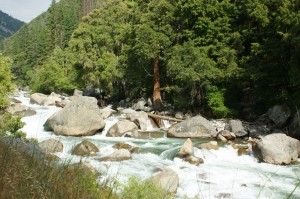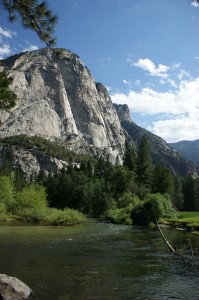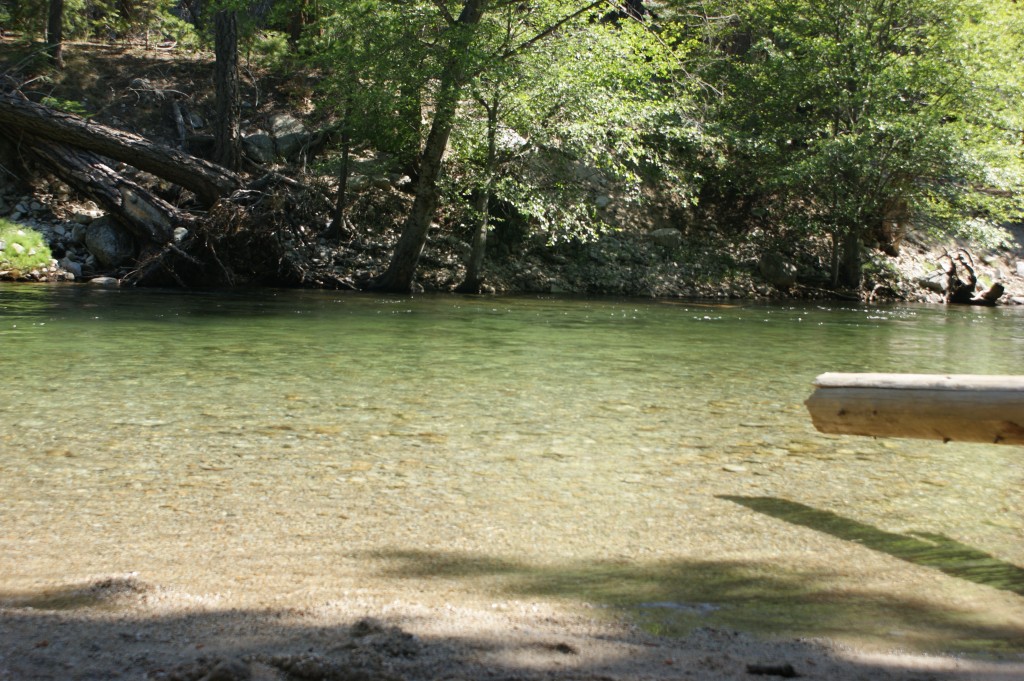Places that might not seem like they have so much in common. A raging river cutting through a steep and narrow canyon. The Valley known for its agricultural abundance, its stretches of flat. And the bustling city of a million different faces- and fog, don’t forget the fog.
But as so many places seem smaller and closer together these days, intimately more connected than they used to- through technology or our awareness that nature cannot indefinitely support all of our uses for it- these places are no different. They are connected by the tenuous threads that hold us all together.
Connection One: Kings River and the Central Valley
For those of us who have been to Kings Canyon, we think of the river as it pours over granite boulders, its white strength baring knuckles around canyon bends. Even if you haven’t been there, you can see it. A pristine and wild river cutting its way through a National Park.
We drive up into the mountains, to National Parks, to see this sort of beauty. In the Kings River’s case what is strange is that it is wild up near its headwaters, but as it flows out of the National Park, and out of our consciousness, the whole river is swallowed up by human uses. Not a drop of it- except in extremely wet years- gets to the place it used to end up- Tulare Lake.
I’ve talked about Tulare Lake before- it was at the southern end of the Central Valley – in fact, the biggest lake west of the Great Lakes. Every year, during the wet season, it left its banks, and flooded large portions of the Valley’s floor. Most rivers end up in the ocean, not in lakes. But the Kings River, along with the Kaweah, the Tule, and the Kern, had their own minds and fed into Tulare’s large freshwater lake and marsh.
The crazy thing to me is that we talk sometimes now of environmental doomsday, of the day when the sea rises and the heat is sweltering. Of the day when there are no trees and little freshwater. The Kings River is an example of how close we are. If you can imagine a hearty mountain river, endlessly pouring water down its chute and imagine who could be thirsty enough to drink every last drop of that endlessness, you can imagine how strange it is for a river’s water to be entirely used up before it gets to its destination. As the Kings River is.
It not all so simple of course. Because the river water is not going to endlessly thirsty Southern California, nope, it is going into a series of irrigation canals, to grow our food and to create space to grow even more food. In fact “the express purpose of the Pine Flat Dam on the Kings River, was to keep water from ever reaching its traditional terminus in Tulare Lake, so crops could be grown on the dry lakebed.” (Intro, p. 146)
We are here. In the land where a whole river is swallowed. Sometimes though, its real strange to think: how we did get here?




How did we get here?
Now there’s a question that can be asked of many things in nature, in many things in our world, in general, when we consider the relationship Muir speaks of in his thoughts of one thing being connected to every other thing.
How do we get to somewhere better?
How do we reverse some of what we’ve put in motion in nature, in our world? Maybe the answers are in the rivers as they are so close and vital to us.
You give us much to ponder. That’s a start.